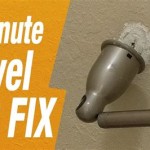How Much Should Labor Cost To Remodel a Small Bathroom?
Remodeling a small bathroom is a popular home improvement project, offering a high return on investment and significantly increasing a home's comfort and value. While materials contribute substantially to the overall cost, labor is often the most significant expense. Understanding the factors that influence labor costs is crucial for budgeting accurately and avoiding unexpected financial burdens. This article provides a comprehensive overview of the typical labor costs associated with a small bathroom remodel, exploring the various elements that affect pricing and offering insights into how to effectively manage these expenses.
Several factors determine the final price of labor for a small bathroom remodel. These include the project's scope, the complexity of the design, the geographic location, the contractor's experience and reputation, and any unforeseen issues encountered during the renovation. A simple cosmetic upgrade, such as replacing fixtures and repainting, will naturally have lower labor costs compared to a complete overhaul involving plumbing relocation, electrical work, and structural changes.
The term "small bathroom" can be subjective. For the purpose of this explanation, a small bathroom is considered to be a space typically measuring between 30 and 60 square feet. These bathrooms are often found in apartments, older homes, or as a secondary bathroom within a larger residence. The limited space presents unique challenges and opportunities for remodeling, often requiring meticulous planning and efficient use of materials.
Key Factors Influencing Labor Costs
The following aspects significantly impact the labor costs associated with remodeling a small bathroom:
1. Scope of Work: The extent of the renovation largely determines the labor costs. A basic remodel might involve replacing the toilet, sink, and showerhead, perhaps with a fresh coat of paint and new flooring. This type of project usually necessitates fewer skilled tradespeople and less time, resulting in lower labor expenses. A more extensive remodel, however, could include moving plumbing lines, rerouting electrical wiring, installing a new shower or bathtub, and constructing structural elements. Such comprehensive projects require a wider range of expertise and a longer timeframe, thereby increasing labor costs substantially.
For example, simply swapping out a like-for-like toilet fixture is a relatively straightforward task that can be completed by a plumber in a few hours. In contrast, relocating a toilet requires cutting into existing plumbing lines, rerouting drainage and water supply pipes, and potentially reinforcing the floor structure. This complex undertaking necessitates extensive planning, precise execution, and compliance with local building codes, all of which contribute to higher labor fees.
Similarly, minor cosmetic work like painting is significantly less expensive than re-tiling a shower. Painting primarily involves surface preparation and applying paint coats, whereas tiling requires removing existing tiles, preparing the substrate, applying mortar, setting the tiles, and grouting. The tiling process demands skilled craftsmanship and is considerably more time-consuming.
2. Complexity of Design: The design intricacy plays a crucial role in determining labor costs. Simple, straightforward designs that utilize standard fixtures and readily available materials typically involve less labor. On the other hand, more complex designs incorporating custom features, intricate tile patterns, or specialized plumbing configurations demand greater expertise and time, impacting the overall labor expenditure.
For instance, installing a standard prefabricated shower enclosure is generally less labor-intensive than building a custom walk-in shower with a frameless glass door, multiple showerheads, and a bench. The custom shower requires precise measurements, waterproofing, specialized tile work, and the installation of custom glass panels, all undertaken by skilled tradespeople. Similarly, installing a standard vanity is considerably less expensive than installing a custom-built vanity with unique storage solutions and integrated lighting.
The complexity also extends to the type of materials used. Natural stone tiles, for example, are more difficult to install than ceramic or porcelain tiles due to their varying thicknesses and potential for cracking. This requires more careful handling and precise installation techniques, increasing the labor time and cost. Similarly, installing intricate mosaic tile patterns demands greater skill and patience compared to installing large format tiles.
3. Geographic Location: Labor costs vary significantly based on geographic location. Areas with a higher cost of living, such as major metropolitan cities, typically have higher labor rates than rural areas or regions with a lower cost of living. The demand for skilled tradespeople also influences pricing, with areas experiencing a shortage of qualified contractors tending to command higher rates. Additionally, local regulations and building codes can impact labor costs. Areas with strict permitting requirements or specific installation standards may require additional labor hours for compliance.
For example, a bathroom remodel in New York City or San Francisco will likely have considerably higher labor expenses compared to a similar project in a smaller town in the Midwest. This is due to higher wages, increased overhead costs for contractors operating in these cities, and greater demand for remodeling services. Furthermore, local building codes in some areas may require specialized certifications or licenses for plumbers and electricians, potentially limiting the pool of qualified contractors and driving up prices.
Transportation costs can also contribute to variations in labor costs. Contractors traveling longer distances to reach a job site may factor in travel time and fuel expenses into their hourly rates or project bids. This is particularly relevant in rural areas where contractors may have to travel significant distances between projects.
Beyond these key factors, other elements can influence labor costs.
Typical Labor Costs Breakdown
While the precise cost of labor varies depending on the factors outlined above, a general estimate can be provided for different aspects of a small bathroom remodel. These figures are illustrative and should be used as a starting point for budgeting, rather than a definitive price quote.
Demolition: Demolition involves removing existing fixtures, flooring, and wall coverings. This can range from $300 to $800, depending on the size of the bathroom and the extent of demolition required. Removing a bathtub, for example, is more labor-intensive than removing a toilet or vanity.
Plumbing: Plumbing work encompasses installing new fixtures, rerouting pipes, and addressing any existing plumbing issues. This constitutes a significant portion of the labor cost, typically ranging from $800 to $2000 or more, especially if plumbing relocation is involved. Running new water lines or drain lines can be complex and requires specialized skills.
Electrical: Electrical work includes installing new lighting fixtures, outlets, and exhaust fans, as well as upgrading the wiring to meet current electrical codes. This generally costs between $500 and $1500, depending on the complexity of the electrical system and the number of fixtures being installed. Adding a new circuit requires running wires from the electrical panel, which can be a time-consuming process.
Flooring: Flooring installation involves preparing the subfloor and laying new tile, vinyl, or other flooring materials. Labor costs for flooring typically range from $500 to $1500, depending on the size of the bathroom and the type of flooring being installed. Installing intricate tile patterns or natural stone flooring is more labor-intensive than installing vinyl or ceramic tile.
Tile Work: Tile installation on walls or showers requires skilled craftsmanship and can significantly impact labor costs. This can range from $700 to $2500 or more, depending on the size of the area being tiled, the type of tile used, and the complexity of the tile pattern. Installing a custom shower enclosure with intricate tile designs will be on the higher end of this range.
Painting: Painting the walls and ceiling is a relatively simple task, but it still contributes to the overall labor cost. Painting typically ranges from $200 to $500, depending on the size of the bathroom and the number of coats of paint required. Proper surface preparation is crucial for a smooth and durable paint finish.
Drywall and Finishing: Repairing or installing new drywall, taping, and sanding the seams, and applying texture can add to the labor costs. This can range from $300 to $800, depending on the extent of the drywall work. This is typically required if any walls are moved or if there is water damage.
Fixture Installation: Installing the toilet, sink, vanity, and shower/tub can range from $400 to $1000, depending on the type and complexity of the fixtures. Installing a complex toilet with advanced features, such as a bidet toilet, can take more time and expertise.
Based on these estimates, the total labor cost for a small bathroom remodel can range from $4000 to $10000 or more. It's essential to obtain multiple quotes from different contractors and carefully review the scope of work included in each quote to ensure an accurate comparison. Remember that these are just estimates, and the actual cost may vary depending on the specific circumstances of the project.
Strategies for Managing Labor Costs
While labor costs are a significant expense in a bathroom remodel, there are strategies to help manage these expenses and stay within budget:
1. Obtain Multiple Quotes: Getting quotes from at least three different contractors is crucial. Compare the quotes not only on price but also on the scope of work, materials included, and the contractor's experience and qualifications. Review online reviews and check references to assess the contractor's reputation and reliability.
2. Define the Scope of Work Clearly: Develop a detailed plan outlining the specific tasks to be performed, the materials to be used, and the desired outcome. Providing a clear scope of work to contractors ensures accurate bidding and minimizes the potential for change orders during the project, which can significantly increase labor costs. Be specific about fixture types, tile patterns, and any custom features.
3. Consider Maintaining Existing Layout: Moving plumbing lines and electrical wiring is one of the most expensive aspects of a bathroom remodel. If possible, consider keeping the existing layout of the bathroom to minimize the need for these costly alterations. Replacing fixtures in their original locations is generally less expensive than relocating them.
4. Be Flexible and Open to Suggestions: While it's important to have a clear vision for the remodeled bathroom, be open to suggestions from the contractor. Experienced contractors may have valuable insights and ideas that can save time and money without compromising the desired aesthetic. They may also be aware of new materials or techniques that can reduce labor costs.
5. Prepare the Space: Consider undertaking some of the preparatory work yourself, such as removing old fixtures, clearing debris, and protecting surrounding areas. This can reduce the amount of time the contractor needs to spend on these tasks, potentially lowering labor costs. However, be sure that any tasks you undertake are within your skill level and do not require specialized tools or knowledge. Improperly performed preparatory work can actually increase overall costs if the contractor has to correct the mistakes.
6. Schedule the Project Wisely: The time of year can impact labor costs. Contractors may be more willing to offer discounts during slower periods, such as the off-season or weekdays. Avoid scheduling the remodel during peak seasons, such as the summer months or holidays, when demand is high and contractors are less likely to negotiate on price.
7. Communicate Effectively: Maintaining open communication with the contractor throughout the project is essential. Address any questions or concerns promptly and ensure that you are kept informed of the project's progress. Clear communication can prevent misunderstandings and minimize the potential for costly errors or delays.
By understanding the factors that influence labor costs and implementing these strategies, homeowners can effectively manage their budget and achieve a successful small bathroom remodel without exceeding their financial limits.

Bathroom Remodeling Costs In Dc 2024 Sweeten

How Much Does A Bathroom Remodel Cost 2024 Data Angi

Small Bathroom Remodel 2024 Cost Guide Modernize

Understanding Small Bathroom Remodel Costs And How To Save

Bathroom Remodeling Costs In New Jersey 2024 Sweeten Com

Small Bathroom Remodel 2024 Cost Guide Modernize

Calculator How Much Does It Cost To Remodel A Bathroom

Bathroom Remodeling Costs In Chicago 2024

How Much Will It Cost To Remodel My Bathroom

How Much Does It Cost To Remodel A 5x7 Bathroom 136 Home
Related Posts







